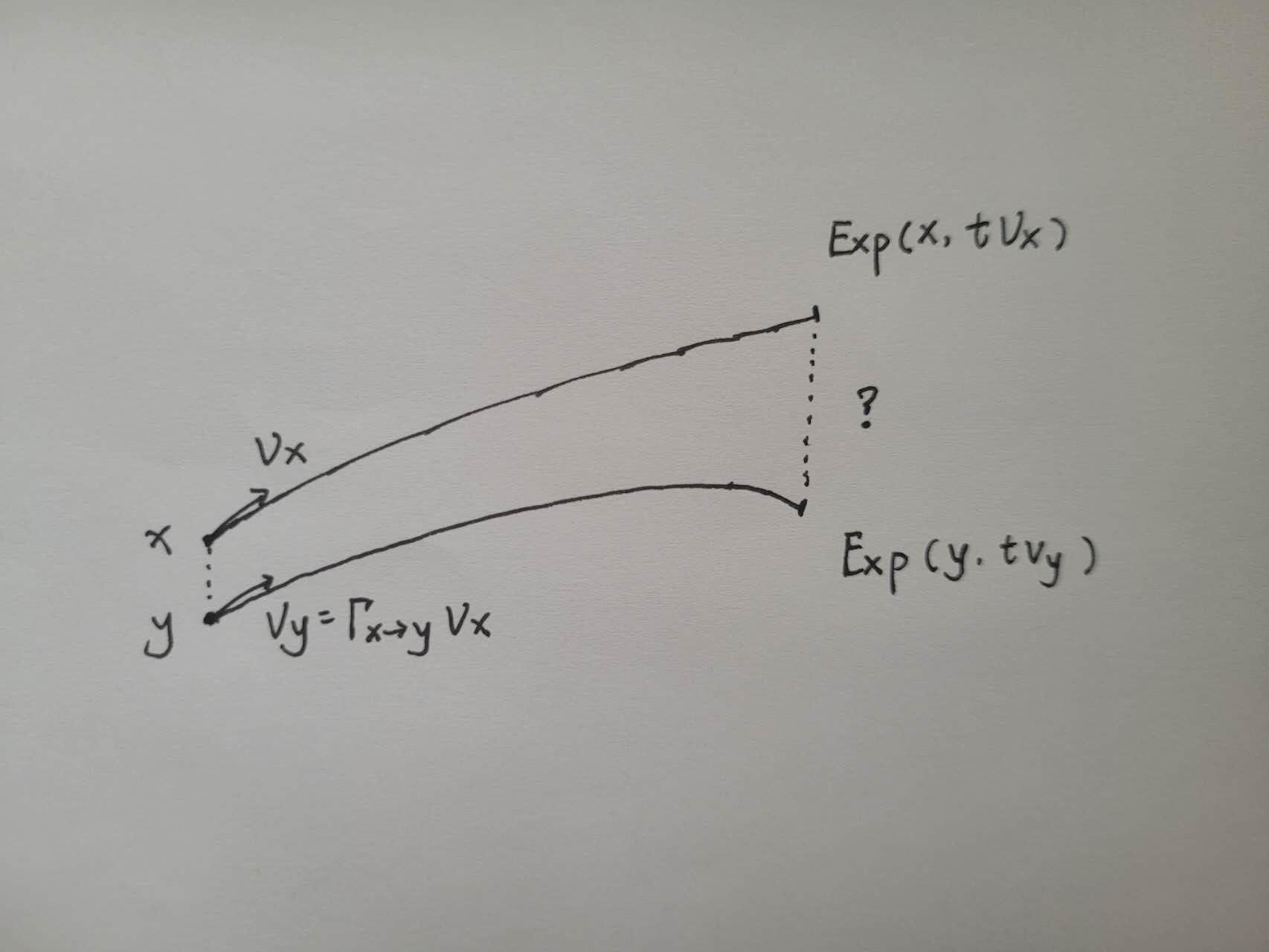Let $(M,g)$ be a complete Riemannian manifold with sectional curvatures constrained within $[\kappa_{\min},\kappa_{\max}]$. Suppose $x,y\in M$ are two points in $M$ and $v_x\in T_{x}M$ is a tangent vector. Define $\Gamma_{x\to y}:T_{x}M\to T_{y}M$ as the parallel transport map along the shortest geodesic connecting $x$ and $y$. Let $v_{y}=\Gamma_{x\to y}v_x\in T_{y}M$. Our question is whether the following inequality holds: $$ d({\rm Exp}(x,t v_x),{\rm Exp}(y,tv_y))\leq c_1e^{c_2t}\cdot d(x,y),\quad \forall t\geq 0, \forall x,y\in M, $$ where $c_1,c_2$ are positive constants independent of $t,x,y$ and $d(\cdot,\cdot)$ is the geodesic distance.
The objective of this question is to show that when $x$ tends to $y$, the distance between two geodesics tends to zero in a certain uniform sense. Hence, the constants $c_1,c_2$ should be independent of $t,x,$ and $y$.

